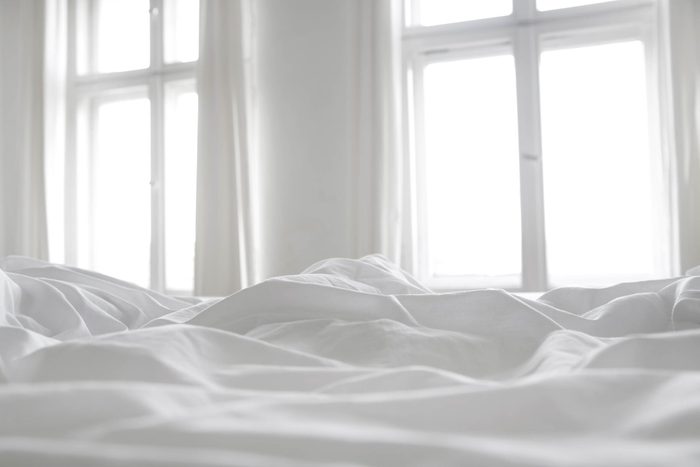
Your dirty bed sheets
There’s something delicious about falling into a cozy bed after a long day, but the icky details about dust mites dwelling in your bed sheets may leave you opting for the couch instead. According to refinery29.com, the average person sheds roughly half an ounce of dead skin every week, which stays in your sheets and becomes prime feeding material for dust mites. The fecal matter and other debris they leave behind can lead to some scary effects, exacerbating eczema, seasonal allergies, skin irritations, and more. To keep these critters out of your snooze space, be sure to wash your bed sheets in 60-degree water at least once a week.
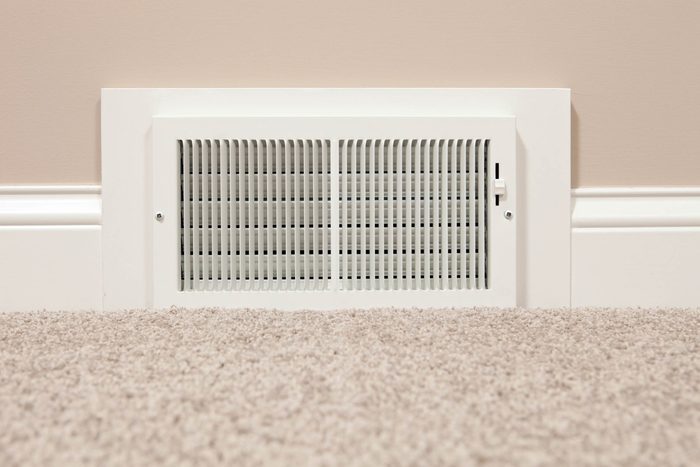
Contaminated heating and cooling vents
If all of a sudden you begin feeling extra allergenic or sick for no apparent reason, contaminated heating and cool ducts may be to blame. The Environmental Protection Agency explains that a little bit of dust in these pipes is normal and largely harmless, but in some cases mold and other debris can build up, wreaking havoc on your health. Experts are still trying to determine whether or not cleaning the ducts prevents these health problems, but the majority agree that removing mold and other toxins from pipes that have become highly contaminated is a smart move. Here are 11 more subtle ways your house might be making you sick.
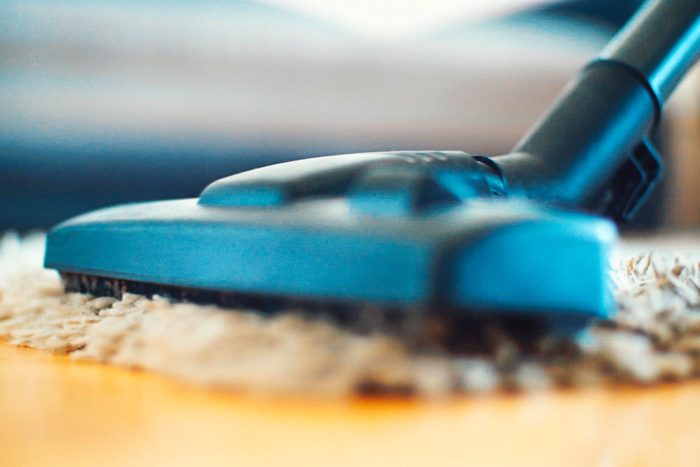
Your old vacuum
You probably consider your vacuum to be a staple cleaning tool in your home, but as it turns out, it may be doing more harm than good. A study published in the journal Environmental Science & Technology tested 21 different vacuums—varying in brand, price, and age—and found that every single one released some dust, bacteria, and allergies into the air. This pollution was much more severe with older vacuums, and those that were not equipped with appropriate filters. The best way to prevent dirt and dust from flying back into your indoor air is to buy a vacuum equipped with a high-efficiency particulate air (HEPA) filter, and clean it regularly. If you live near a source of air pollution, such as an airport, a factory, or a busy highway, consider using an indoor air purifier, such as the Rowenta Intense Pure Air, to filter out chemicals as well as pollen that could otherwise trigger symptoms for people with allergies, asthma, and conditions like COPD.

Your pet’s fur
Furry friends can be as loved and valued as human family members, but unfortunately, the dander they leave behind has the potential to make you sick. Made up of microscopic bits of dead skin, pet dander is notorious for causing people to sneeze and sniffle, especially people with pet allergies. According to the American Lung Association, the best way to prevent your allergies from flaring up around your pet is to keep it off of your furniture, fabrics, and carpets as much as possible. You should also be sure to dust and clean your home often, to stop dander from piling up. Check out these genius tips from professional house cleaners you should definitely steal.
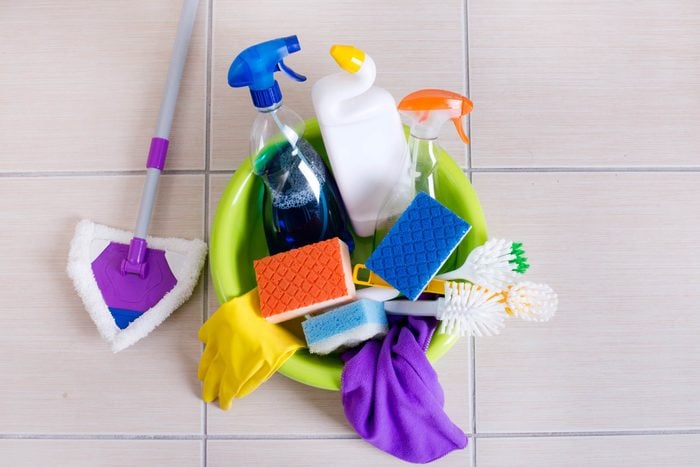
Household cleaning products
The majority of household cleaning products are packed with loads of potentially harmful chemicals that can cause a slew of different problems to your health. The most concerning products are those that contain cancer-causing carcinogens, such as certain laundry detergents that contain formaldehyde, and jewelry cleaners, which often carry the toxic chemical perchloroethylene. Fortunately, there are plenty of natural, harm-free ways to keep your home clean and shiny. Natural ingredients like lemon, cooking oil, vinegar, and baking soda will all get the job done, while keeping your health in check.
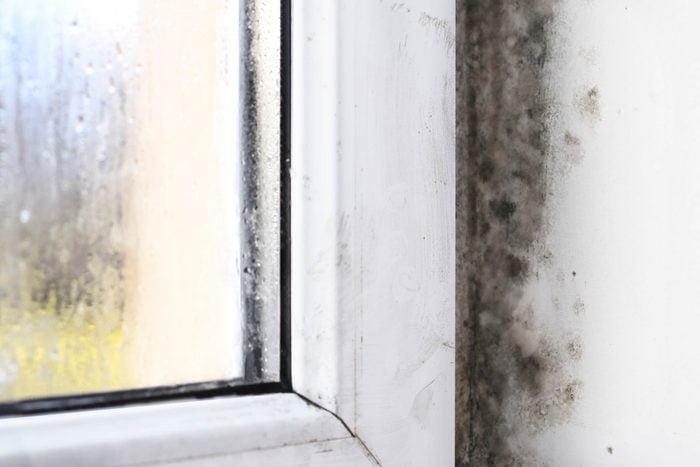
Secret strips of mold
Hidden patches of mold can lurk in all different areas of your home, from your shower head to your drywall to your basement. According to ABC News, mold tends to build up in damp areas, especially if there’s not much airflow or room for the moisture to escape. The potential effects of these hidden stretches of mold are frightening, as exposure can lead to nausea, headaches, nasal congestion, and more, and it can further exacerbate asthma symptoms. To rid your home of mold and protect yourself from its dangers, the EPA recommends using detergent and water to scrub the mold off of any hard surfaces, and increasing ventilation in the area as much as possible to prevent any further contamination. Check out the best air purifiers for mold for better respiratory health.
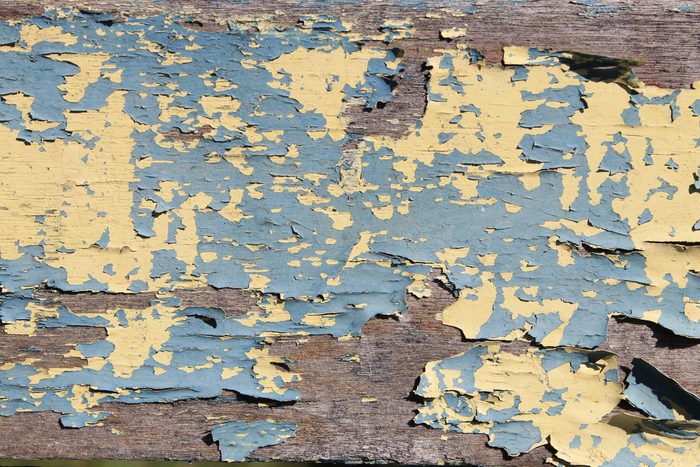
Lead paint
If you have paint peeling off the walls, and your home was built any time before 1978, you should be wary of the dangers of lead paint. Prior to that time, most houses in the United States were coated with lead-based paint, as scientists were not yet aware of the harmful effects the chemical can cause. However, we know now that exposure can lead to damage to the brain, nervous system, kidneys, and more, according to WebMD. To make sure you’re safe from the hazards of lead paint, be sure to test your home for the chemical if it was built before 1978. Take-home tests made for this purpose are available at hardware stores and online. If you do discover that there is lead lurking in your home, you may want to look into hiring someone to remove it, as the process is quite complicated.
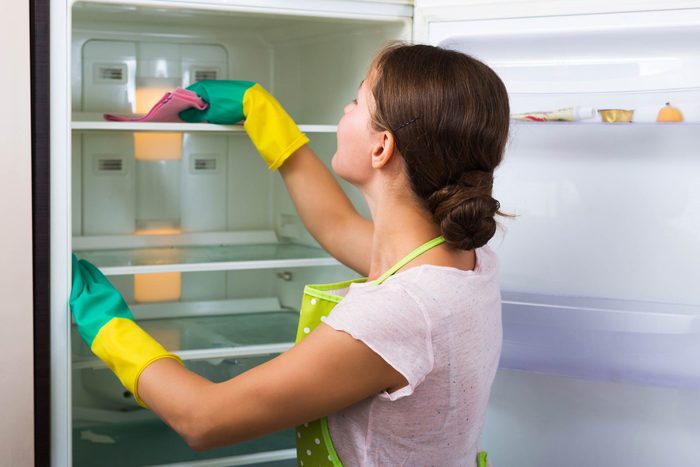
Filthy refrigerator drawers
Even if the fruit and vegetable drawers in your refrigerator appear to be clean and sterile, they could be hiding a mass of dangerous microorganisms, including E. coli, salmonella, and more. According to USA Today, these bacteria can lead to symptoms of food poisoning, which can range from an upset stomach to something more severe, like kidney failure. To reduce your chances of developing any kind of foodborne illness, be sure to wash your fruits and vegetables carefully before eating them, and disinfect the fridge drawers and shelves at least once a month. Here’s what to do if you accidentally eat mold.
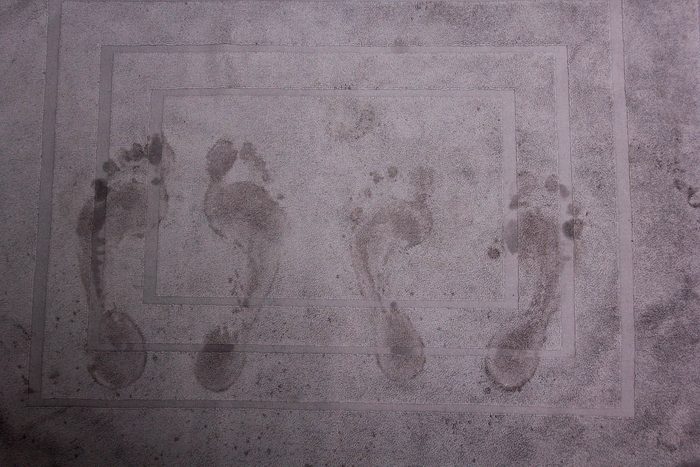
Your bath mat
Rarely do we ever give our bath and shower mats a second thought, but as it turns out, they’re often breeding grounds loads of hazardous bacteria, mold, and dust mites. When you step out of the showering dripping wet, your bath mat traps the moisture, allowing mold and harmful bacteria to thrive, according to the Huffington Post. To keep your bath mat germ-free, try drying off in the shower rather than on the mat to avoid getting it all wet. Additionally, be sure to wash it in hot water at least a couple of times a month. Here are 31 more things you haven’t cleaned in a very long time.
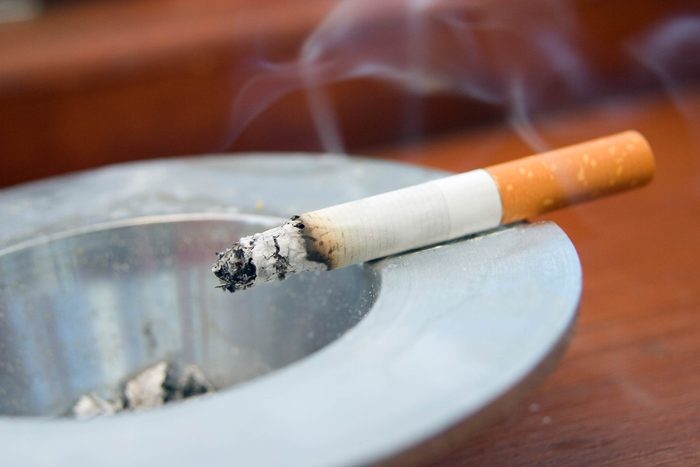
Cigarette smoke
Even if you’re not smoking cigarettes yourself, simply being in close proximity to someone who is can have severe lasting effects on your health. According to the Centers for Disease Control and Prevention, cigarette smoke contains more than 7,000 chemicals, about 70 of which are known to cause cancer. Horrifyingly enough, the CDC also estimates that approximately 2,500,000 people have died from second-hand smoke since 1964. The best way to protect against this is to prohibit anyone from smoking inside your home, especially with all the windows and doors shut. Once you’ve eliminated all of these concerns, check out the 38 things your housecleaner secretly wants you to know.